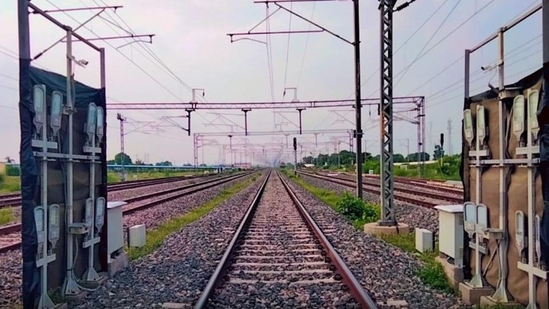Express routes: India’s railway connectivity with South Asia
This paper is authored by Riya Sinha, associate fellow, CSEP.
Despite strong political, economic, and geostrategic motivations for cross-border railway connectivity, India’s progress in establishing a robust and thriving rail network with its neighbours has not progressed enough. This paper addresses a critical question in India’s connectivity efforts: Despite the political, economic, and geostrategic incentives driving New Delhi’s cross-border railway initiatives, why has India struggled to sustain momentum in this sector?

To explore this, the paper conducts a comprehensive review of India’s cross-border railway connectivity over the past two decades, analysing the progress and the primary drivers behind it. It seeks to answer four key questions: What has been India’s progress in developing cross-border railways in the last two decades? What are the economic, political, and geostrategic drivers of India’s renewed interest in enhancing railway linkages? What challenges have contributed to the slow development and expansion of railway connectivity between India and its neighbouring countries? Finally, what are the enablers for improving India’s cross-border railway connectivity?
While India has made some headway, inaugurating new lines with Bangladesh and Nepal, the growth of rail freight and passenger traffic remains limited. Road transport continues to dominate due to cost advantages, streamlined processes, and established infrastructure.
Several factors drive India’s push for rail connectivity. Economically, it offers a chance to tap into the region’s burgeoning growth and lower logistics costs, enhancing trade competitiveness. Politically, it aligns with India’s “Neighbourhood First” and “Act East” policies, fostering regional cooperation. At the geostrategic level, railway connectivity provides New Delhi a counterbalance to China’s growing influence through infrastructure projects in South Asia.
However, progress has been slow due to several challenges:
• Institutional fragmentation: Limited coordination between railway agencies and other government departments in India and neighbouring countries hinders project implementation.
• Inadequate infrastructure: Shortage of cargo-handling equipment, inadequate platforms, and a lack of dedicated goods stations create bottlenecks and delays.
• Non-standardised operational procedures: Engine changes at borders, differing customs practices, and CONCOR’s monopoly over container movement add complexity and reduce efficiency.
• Security concerns: Insurgency, smuggling, and political tensions in border regions disrupt operations and necessitate costly security measures.
• Limited private sector participation: Reliance on government funding restricts innovation, investment, and operational efficiency.
To overcome these challenges and unleash the potential of cross-border rail connectivity, India should:
• Strengthen institutional cooperation: Establish dedicated units for cross-border rail projects within relevant ministries, fostering regular dialogue and coordination between Indian agencies and their counterparts in neighbouring countries.
• Leverage development cooperation: Strategically allocate Lines of Credit and grants to support infrastructure development, technology transfer, and capacity building of railway personnel in partner countries.
• Improve cargo-handling infrastructure: Invest in modern cargo handling equipment, dedicated goods stations, and elevated platforms at key rail yards and ICPs.
• Standardise operational procedures: Negotiate bilateral agreements for streamlined customs clearance, engine movement across borders, and simplify booking processes for exporters and traders.
• Enable private sector participation: Encourage private investment and operational management through PPPs to increase efficiency and reduce reliance on government funding.
• Address security concerns: Implement robust security frameworks, leverage technology for surveillance and cybersecurity, and engage in diplomacy and CBMs to mitigate risks in border areas.
By embracing these enablers, India can overcome the existing limitations and transform cross-border rail connectivity into a true engine of regional integration, economic growth, and strategic advantage.
This paper can be accessed here.
This paper is authored by Riya Sinha, associate fellow, CSEP.
All Access.
One Subscription.
Get 360° coverage—from daily headlines
to 100 year archives.



HT App & Website







